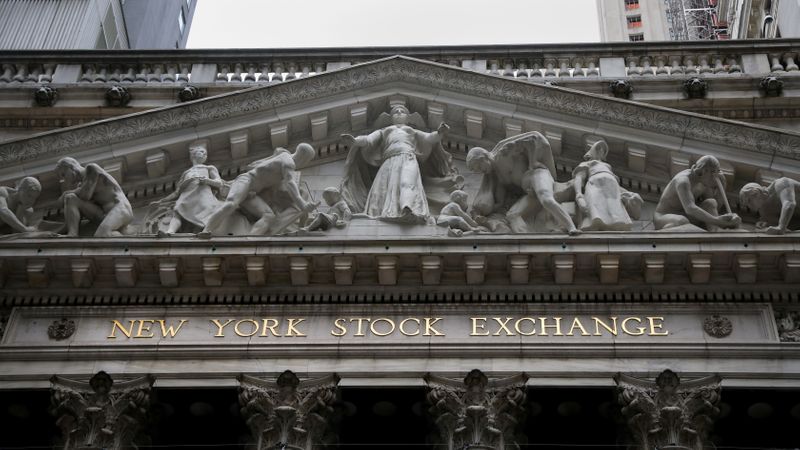NEW YORK (Reuters) – International stocks rose on Friday, with all three major Wall Street indexes posting weekly gains as investors grew more hopeful the U.S. government would provide additional economic stimulus.
Gold jumped and the dollar dropped as investors focused on the probability of forthcoming U.S. coronavirus relief.
Wrangling in Washington over pandemic aid has dominated global markets this week, and although U.S. House Speaker Nancy Pelosi and Treasury Secretary Steven Mnuchin failed to hammer out a deal, talks will continue despite Republican doubts.
Trump said in an interview on Friday that he wants to see a bigger stimulus package than either Democrats or Republicans were offering, a reversal from his threats at the beginning of the week that he would halt negotiations.
“We’re in one of those periods where Washington is driving Wall Street, be it either the presidential election or fiscal stimulus and today it was about the stimulus,” said David Carter, chief investment officer at Lenox Wealth Advisors in New York.
“Markets are up on the hope that more fiscal stimulus is coming but its really just hope, as communication from Washington has become somewhat erratic,” Carter added.
Trump expressed a desire to return to the campaign trail a week after announcing he had contracted COVID-19, but aides said he was unlikely to hold in-person events until Monday at the earliest.
Reuters/Ipsos polls show Trump’s approval rating plummeting, with Americans steadily losing confidence in his handling of the pandemic, while Democratic challenger Joe Biden makes gains in several key swing states.
“Biden is rising in the polls, creating both hope that fiscal stimulus is coming and less of a chance of a contested election which could be a real problem for markets,” Carter said.
Next week, investors’ attention will shift to reporting season, and analysts now see third-quarter S&P 500 earnings, in aggregate, falling by 21% year-on-year, according to Refinitiv.
The Dow Jones Industrial Average <.DJI> rose 161.39 points, or 0.57%, to 28,586.9, the S&P 500 <.SPX> gained 30.3 points, or 0.88%, to 3,477.13 and the Nasdaq Composite <.IXIC> added 158.96 points, or 1.39%, to 11,579.94.
European stocks posted a second straight week of gains on upbeat earnings forecasts, while investors paid close attention to fiscal aid talks in the United States.
The pan-European STOXX 600 index <.STOXX> rose 0.55% and MSCI’s gauge of stocks across the globe <.MIWD00000PUS> gained 0.84%.
Yields on Treasury bonds ticked higher in afternoon trading amid improving risk appetite.
Benchmark 10-year notes <US10YT=RR> last fell 2/32 in price to yield 0.772%, from 0.767% late on Thursday.
The 30-year bond <US30YT=RR> last fell 4/32 in price to yield 1.571%, from 1.566% late on Thursday.
Crude prices fell more than 1% after an offshore oil worker strike in Norway ended eased supply pressures, even as Hurricane Delta forced U.S. energy companies to cut output.
U.S. crude futures <CLcv1> settled at $40.60 per barrel, down 1.43%, while Brent <LCOcv1> fell 1.13% to settle at $42.85 per barrel. (GRAPHIC: Stocks versus COVID, https://fingfx.thomsonreuters.com/gfx/mkt/yxmvjbdyyvr/Pasted%20image%201601984809410.png)
The dollar dropped against a basket of world currencies on fiscal relief optimism and the growing likelihood of a Biden victory.
The dollar index <.DXY> fell 0.58%, with the euro <EUR=> up 0.54% to $1.1821.
The Japanese yen strengthened 0.40% versus the greenback at 105.63 per dollar, while Sterling <GBP=> was last trading at $1.304, up 0.83% on the day.
Gold prices jumped as the increased likelihood of stimulus pushed investors to bullion as a hedge against possible inflation.
Spot gold <XAU=> added 1.8% to $1,927.96 an ounce.
(Reporting by Stephen Culp; Additional reporting by Tom Arnold)
























